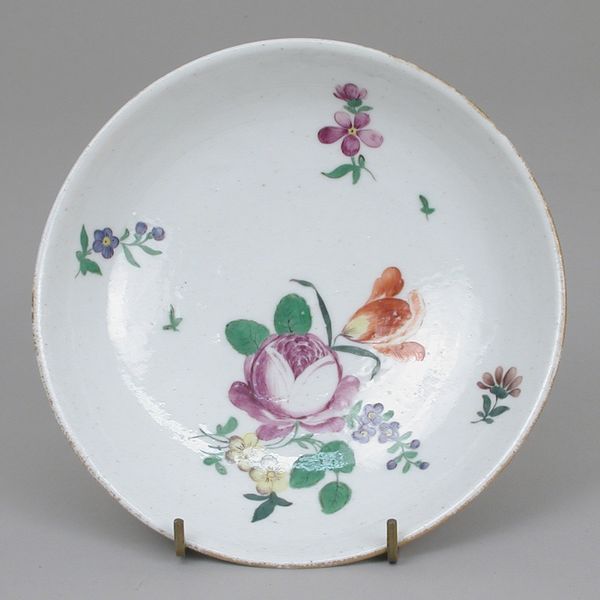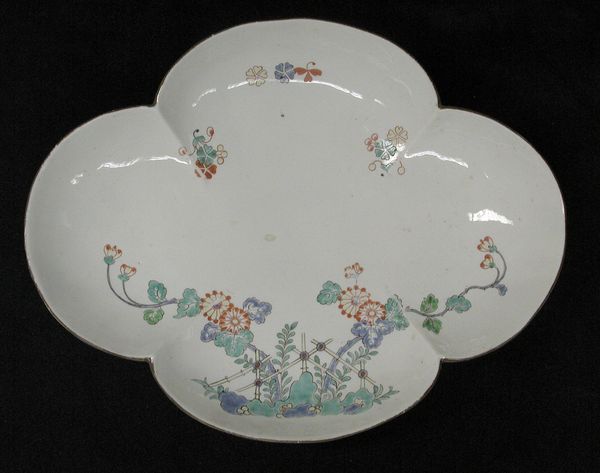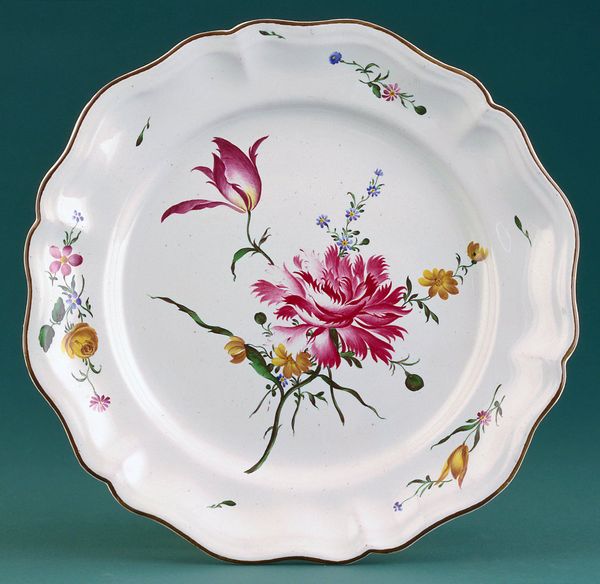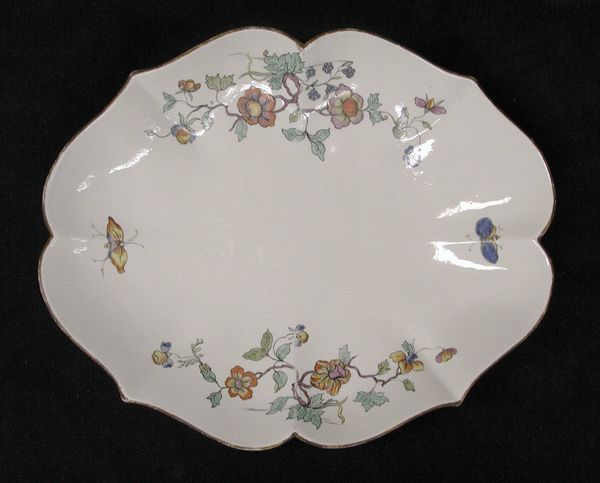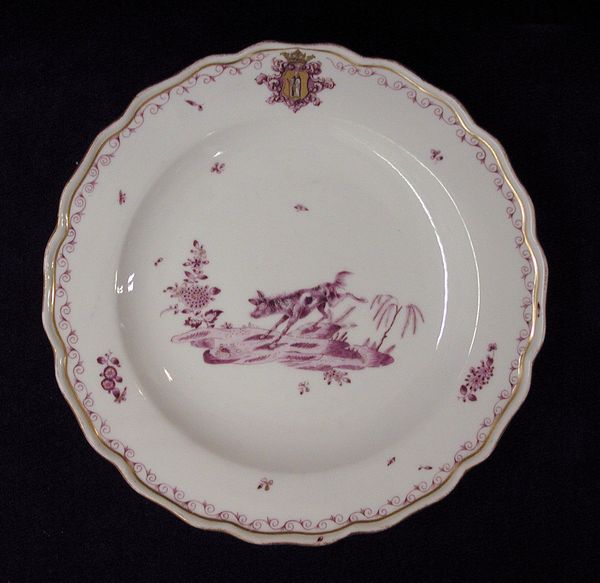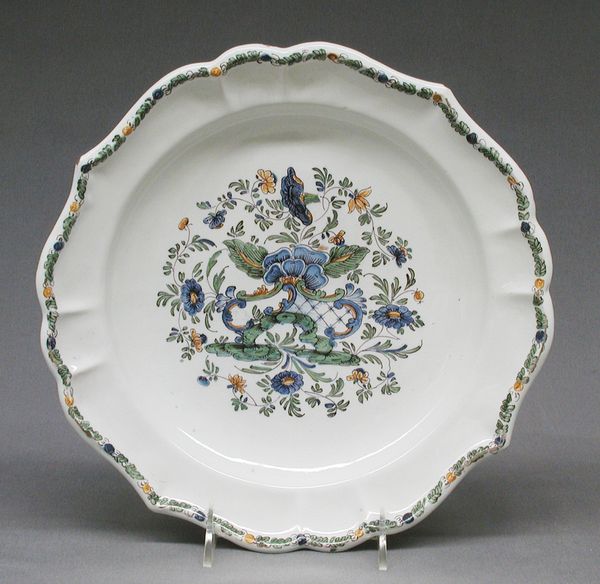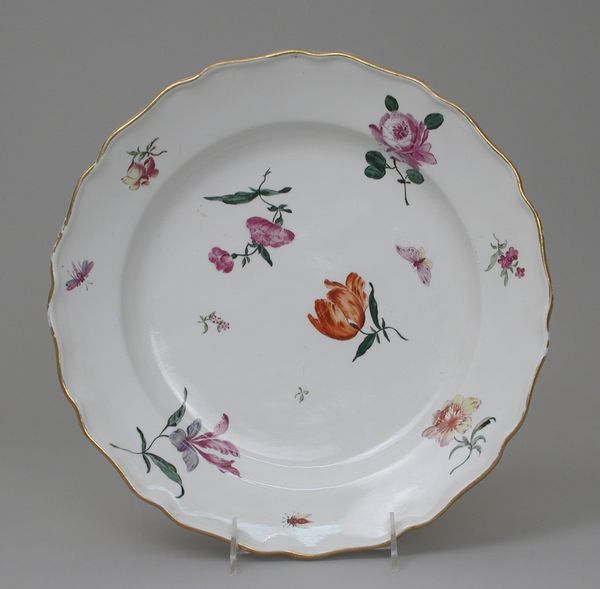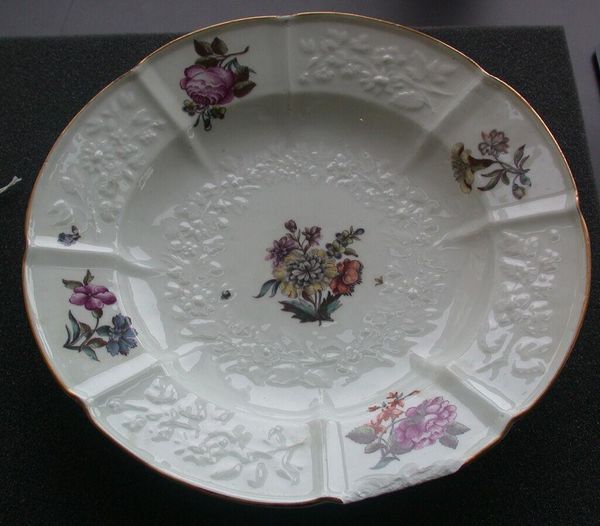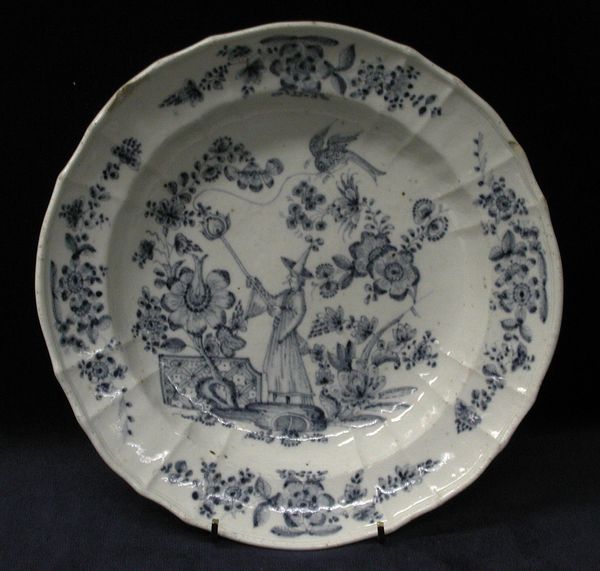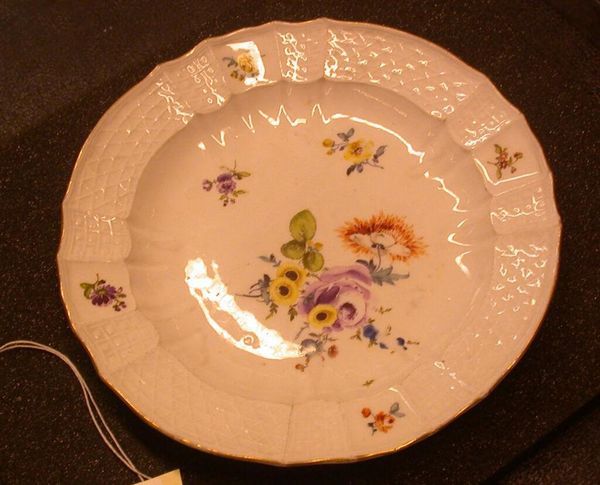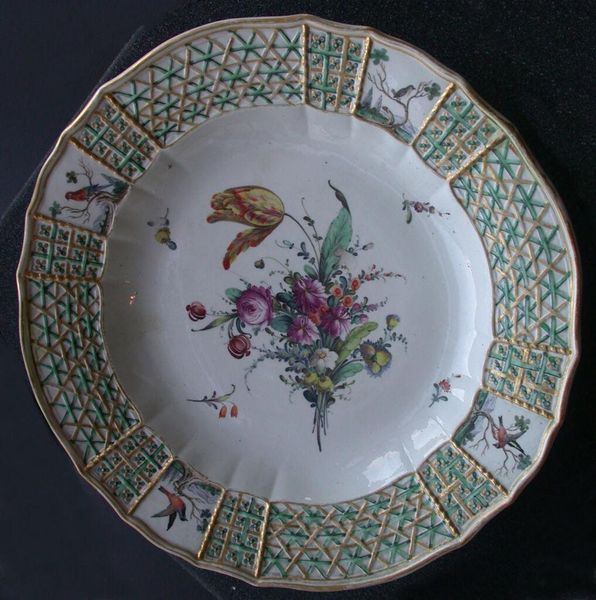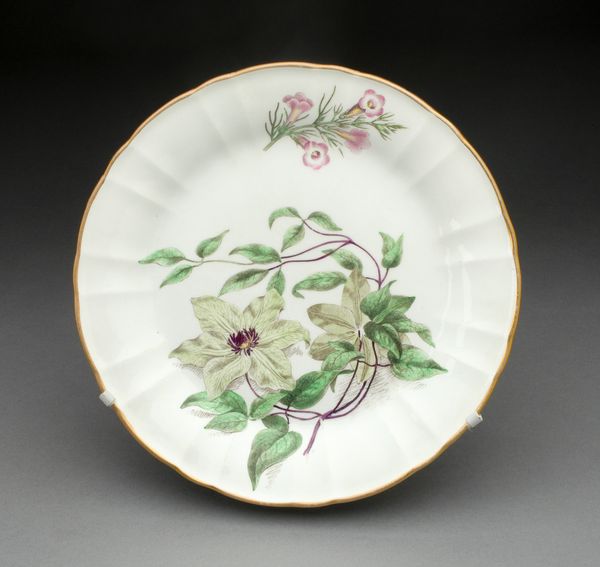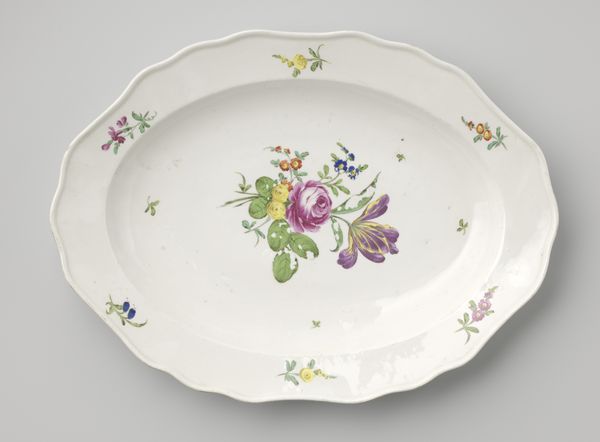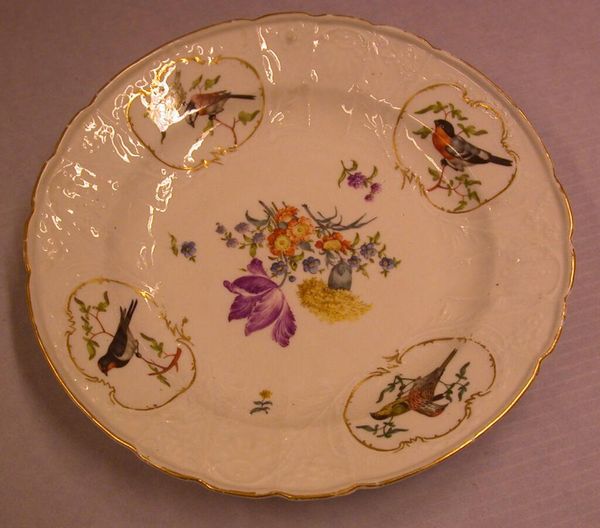
ceramic, porcelain, sculpture
#
ceramic
#
porcelain
#
sculpture
#
ceramic
#
decorative-art
#
rococo
Dimensions: Width: 16 5/16 in. (41.4 cm)
Copyright: Public Domain
Curator: The item before us, dating from 1752 to 1762, is a porcelain Platter crafted by the Frankenthal Porcelain Manufactory, currently held at the Metropolitan Museum of Art. Editor: It’s delightful! A certain delicate frivolity seems to pervade it; the composition feels incredibly light, almost weightless. And the colors... they contribute to that impression. Curator: Rococo through and through. Note the floral patterns. Such motifs were immensely popular among the European elite, especially in decorative arts intended for display and courtly dining. Editor: Precisely. And that border! Notice how it frames the central botanical scene. It appears to have been fabricated by creating a wicker or latticework design that suggests a basket that would contain something organic like freshly-picked food or flowers from a royal garden. Curator: The creation of porcelain itself was politically charged. Royal manufactories competed fiercely to replicate the secrets of Meissen porcelain, thereby gaining status and economic power for their respective states. Frankenthal, under the patronage of the Elector Palatine, certainly intended to impress. Editor: The asymmetry, that subtle curve of the central plant... even in stillness, there is inherent movement. It seems ready to come alive! Note how each brushstroke and glaze brings forth an ethereal quality—so light that it doesn't even feel like "ceramic." It really challenges that very notion. Curator: Right—the creation and display of this type of refined object confirmed a system of aristocratic status through cultivation, taste, and material wealth. Each family commissioned services according to the latest fashions to project political strength through aesthetic prowess. Editor: Knowing its original setting—a table laden with equally ornate silver, glass, and rich foods—it seems designed to delight. I appreciate gaining insights into what informs our contemporary perspective as museum goers. Curator: Understanding this platter situates it within complex networks of patronage, trade, and artistic exchange that we often overlook in purely aesthetic appreciation. I'm glad to hear the layers of history have enriched your gaze!
Comments
No comments
Be the first to comment and join the conversation on the ultimate creative platform.
